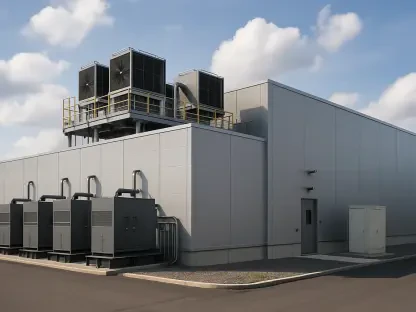The constantly evolving landscape of networking technologies presents both challenges and opportunities for enhancing network management, optimization, and security. In recent years, significant advancements have been made in various networking concepts, tools, and protocols, paving the way for improved performance and innovative infrastructure solutions.
The Impact of AI on Networking
Artificial intelligence (AI) has revolutionized the networking industry, offering new methods to enhance network performance and security. AI servers, specifically designed to handle AI workloads, are critical for tasks such as machine learning and data processing. By integrating AI into network management, these intelligent systems can autonomously monitor, predict, and resolve network issues, thereby significantly reducing the need for human intervention.
5G and Wireless Technology Advancements
The advent of 5G technology has brought numerous benefits, including faster speeds, lower latency, and increased capacity. This new generation of wireless technology supports applications such as private 5G networks and network slicing, which allows for the creation of virtual networks tailored to specific requirements. Innovations like Open RAN (O-RAN) and beamforming further enhance the efficiency and reliability of wireless communication, making it more adaptable to diverse use cases.
Evolving Data Centers
Data centers have seen a transformation from centralized facilities to more distributed edge deployments and cloud services. This shift responds to the growing demand for real-time data processing and low-latency communication. Data center automation and sustainability have become crucial for improving operational efficiency and reducing environmental impact. Hyperconverged infrastructure (HCI) offers a unified approach by integrating compute, storage, and networking, simplifying management and scalability.
Network Security Enhancements
Network security has evolved significantly with the development of next-generation firewalls (NGFW), which incorporate advanced features such as intrusion prevention and SSL inspection. These firewalls provide a more robust defense against ever-evolving threats. Additionally, network access control (NAC) and secure access service edge (SASE) architectures further strengthen security frameworks, ensuring secure and efficient access to network resources.
Ethernet and IP Protocols
Ethernet remains an essential protocol in modern networking due to its adaptability and reliability. It is particularly relevant in supporting AI workloads and other high-bandwidth applications. Understanding various IP-related concepts, including IP addresses, IPv6, and the Internet Protocol itself, is fundamental for ensuring seamless communication between devices over networks.
Cloud Services and Networking Convergence
The convergence of cloud services and networking has given rise to models like Platform as a Service (PaaS), Network as a Service (NaaS), Infrastructure as a Service (IaaS), and Identity as a Service (IDaaS). These models highlight the shift towards scalable, cloud-based solutions that enhance flexibility and efficiency in managing network resources. By leveraging cloud technologies, organizations can better meet their networking needs while minimizing infrastructure overhead.
IoT and Industrial IoT Innovations
Innovations in IoT (Internet of Things) and Industrial IoT (IIoT) have led to the development of new standards and protocols governing device connectivity and communication. Concepts like Industry 4.0 and narrowband IoT (NB-IoT) exemplify the integration of IoT devices within industrial processes, enabling more efficient and automated operations. These technologies are driving significant advancements in various industries, including manufacturing, logistics, and healthcare.
Virtualization and Storage Networking
Technologies such as virtual machines (VMs), hypervisors, and network virtualization have streamlined resource management and enhanced network efficiency. In the realm of storage networking, solutions like Network Attached Storage (NAS), Non-Volatile Memory Express (NVMe), and solid-state drives (SSD) offer substantial performance improvements, catering to high-demand scenarios and applications.
Advanced Networking Concepts
Network management is becoming more sophisticated with the use of advanced analytics and automation tools. These tools help in monitoring network traffic, identifying potential issues before they become problems, and ensuring overall network health. Moreover, network optimization techniques are continuously refined, providing faster data transfer rates, reduced latency, and enhanced user experiences.
Security remains a critical aspect of networking, with new threats emerging regularly. Advances in cybersecurity protocols and practices are essential in protecting data and ensuring user privacy. Innovations such as zero-trust architecture, end-to-end encryption, and AI-driven threat detection systems have become standard in modern networks, contributing to robust security defenses.
In summary, the dynamic nature of networking technologies consistently drives the industry forward, resulting in smarter, faster, and more secure network systems.









